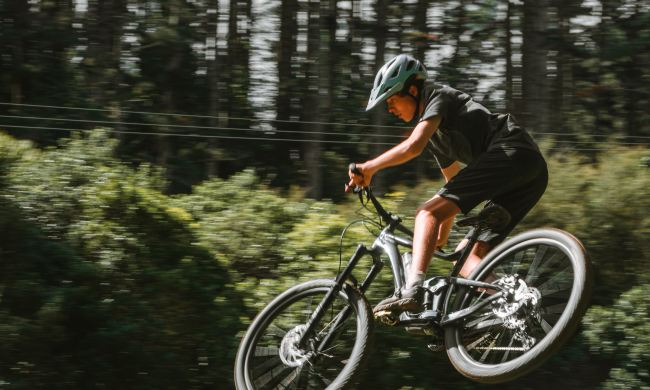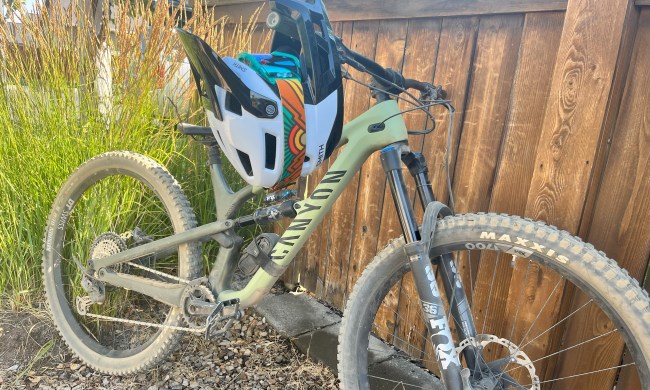
The most important consideration when shopping for the best (and cheap) outdoor gear is finding the right size for you. This is true of everything from bicycle helmets to hiking backpacks to trail running shoes. If your equipment doesn’t fit properly, it’s likely to spend more time in the back of your closet than outside where it belongs. Bikes are no different. An improperly sized bike makes for an inefficient ride and can lead to discomfort, muscle soreness, and even injuries.
Knowing your unique riding position and how to size a bike for you will make riding infinitely more enjoyable. Fortunately, knowing what size bike you need — whether you’re into road bikes, folding bikes, or electric bikes — is straightforward. In this bike size guide, we’ll go over how to size a bike properly, so you’re as comfortable in the saddle as possible.
How to Size a Bike
There’s a lot of nuance in finding the perfect-size bike for you, but it helps to understand a few basics. First, consider your personal riding style. Novices may prefer a more vertical position, while professionals typically adopt a streamlined stance that’s as parallel to the terrain as possible to maximize aerodynamics. Your ride style, coupled with your overall body size, including your inseam and arm length, will dictate the size of the bike frame you need. If possible, it’s best to consult a skilled technician to determine the ideal size of your bike.
How Bikes Are Sized
Bikes typically fall into one of three categories: Road bikes, mountain bikes, and hybrid bikes. Road bikes are sold in numerical or standard sizes (small, medium, large, etc.). However, there’s no industry standard for manufacturers to rely upon. So, a 54 Diamondback road bike, for example, might not be comparable to a 54 Felt road bike. Mountain bikes make things a bit easier by relying on standard sizes (S, M, L) that are fairly similar between brands. Hybrid bike sizes fall somewhere between the flexibility of mountain bikes and the forgivability of road bike sizing.

What Size Bike Do I Need?
In-Person Shopping
Once you’ve figured out your budget, the second most important question to ask is, “What size bike do I need?” The way to determine if a bike’s size is right for you is by measuring its standover height (the distance from the ground to the top of the top tube). For in-person shopping, this is much easier to do. While wearing your usual bike shoes, step over the top tube, plant both feet squarely on the floor on either side of the bike, and lift the bike off the ground. For road bikes with a straight top tube (parallel to the ground), you want about one inch of clearance between the tires and the ground. For those with a sloping top tube (known as compact or semi-compact designs), 2 inches of clearance is best.
Mountain bikes require a bit more clearance of around 2 inches between the ground and tire. For models with a full suspension that compresses under your weight, one to two inches of clearance is fine. Keep in mind that, for mountain bikes with dramatically sloping tubes, you can’t only rely on the amount of clearance during this standover test.
For sizing purposes, hybrid bikes are the most forgiving of the three common bike types. Riders shopping city commuter hybrids can safely rely on the road bike sizing test above. For cruisers or step-through styles, standover height usually isn’t a concern because of the sharply raked top tubes.
Online Shopping
Determining the right size bike for you is certainly easier when shopping in person, but it’s possible for online purchases, too. Simply measure your inseam using a standard tape measure or tailor’s tape. Subtract 1 inch from your inseam measurement to find your bike’s ideal standover height. For example, someone with a 32-inch inseam would be most comfortable on a bike with a 31-inch standover height.
Most online retailers will list a relevant bike size chart to help find the right-size bike based on your inseam. If you’re on the cusp of two sizes, opt for the larger. From there, you can adjust the seat for the perfect fit.
Don’t Forget Your Upper Body
When searching for the right size bike for you, height is one factor. To dial in your bike’s fit even more, it’s important to take the riding position of your upper body into account, too. Here, having a technician or cycling-savvy friend to assess your personal position comes in handy.
Most riders, especially novices, will want a position that’s neither too vertical nor too horizontal. For road bikes, that means aiming for a roughly 45-degree arc between your hips and torso. A 90-degree bend in your arms is ideal to ensure you’re not leaning too far forward or sitting too high over the seat. Mountain bikes are more flexible, meaning these angles needn’t be exact because riders often spend more time off-saddle than on.
Ready to start two-wheeling? Check out our guide to road biking, then shop the best cheap bicycle deals available right now.



